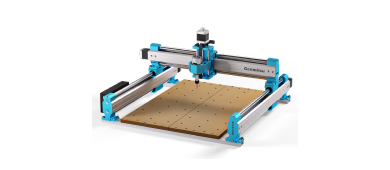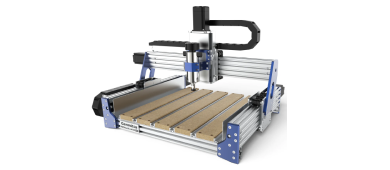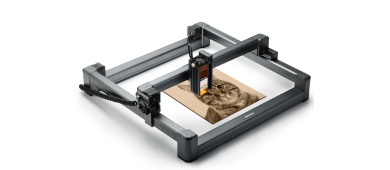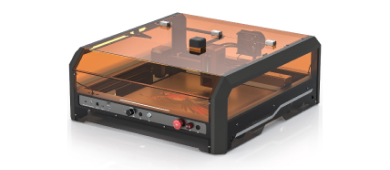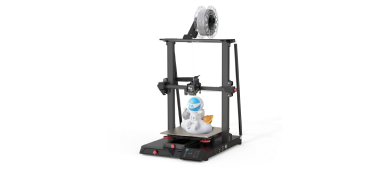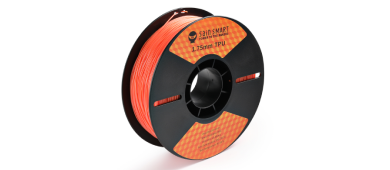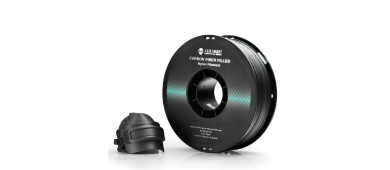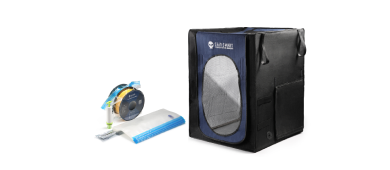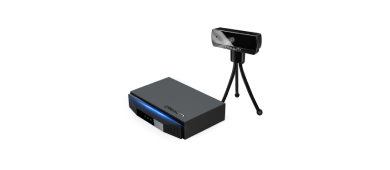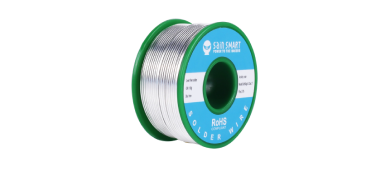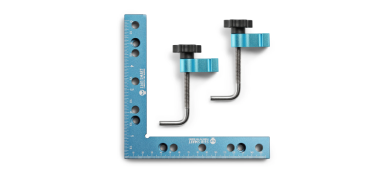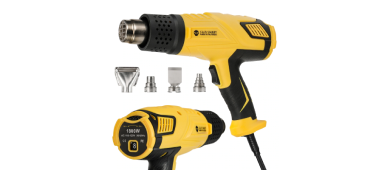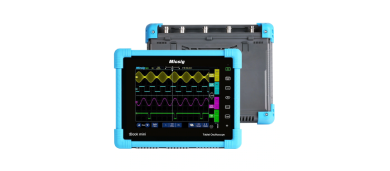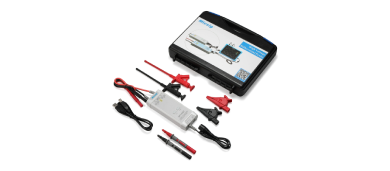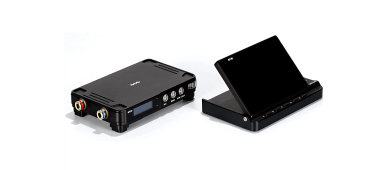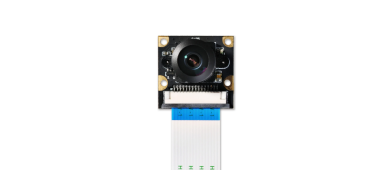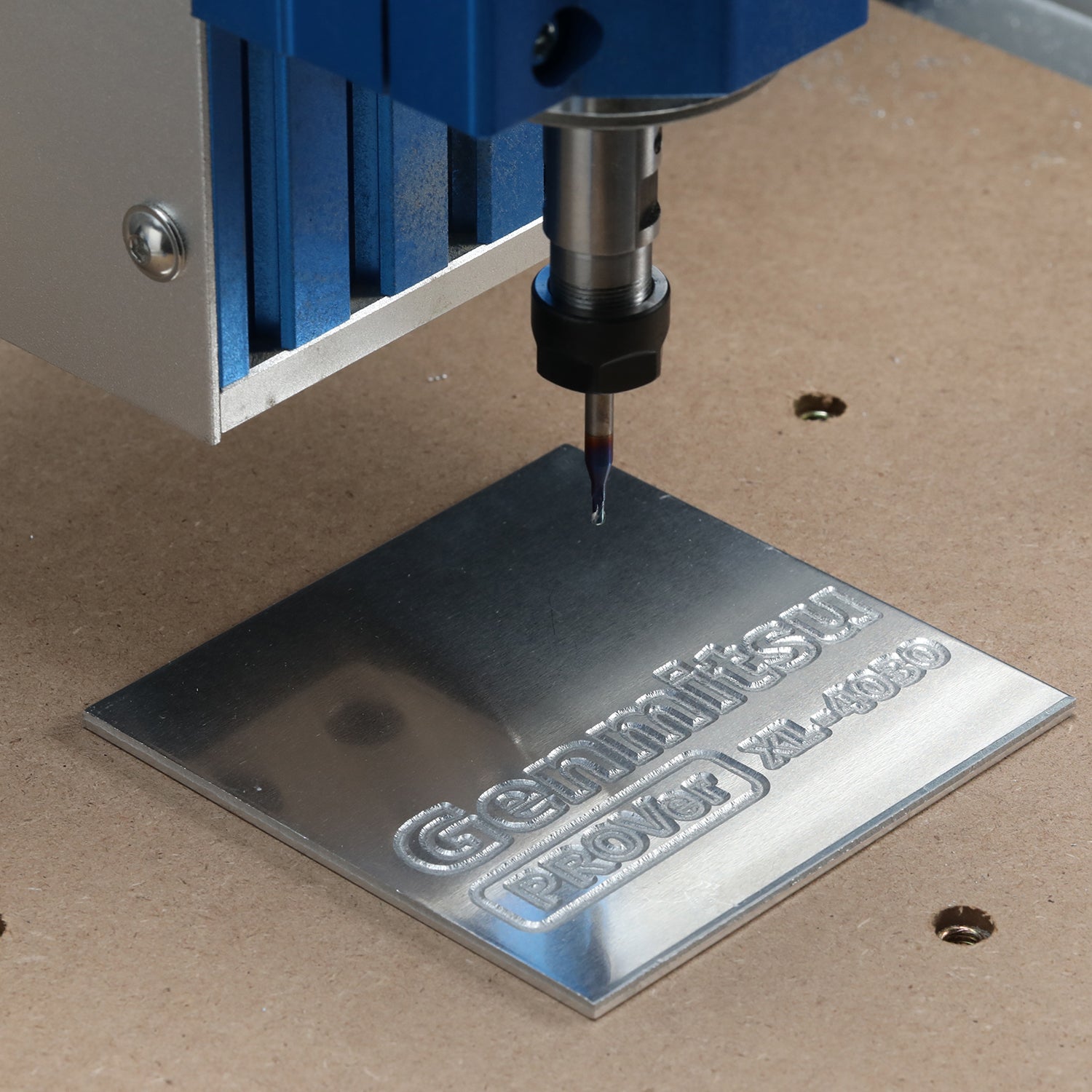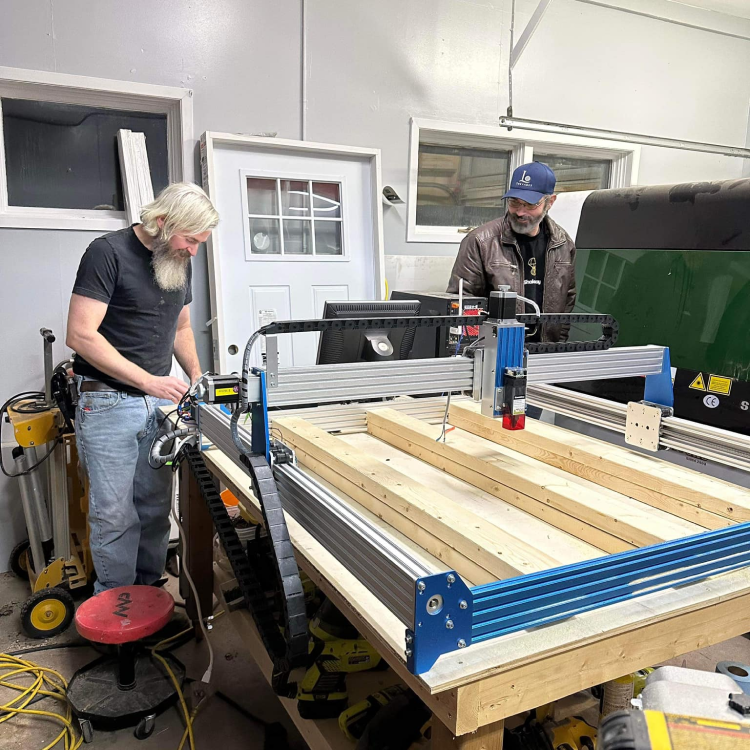Written by Trevor Franks
I have a small woodworking shop in my garage and I do a lot of miscellaneous woodworking projects as a hobby. One of the most versatile and least space-consuming tools is the router. I’ve never actually owned a full size router – but I have had several different trim/palm routers and I’ve used them frequently in a ton of different applications. I got my hands on the Genmitsu 1 HP router and tested it out and here are my findings after a couple weeks of ownership.
Packaging
I’m not a big stickler for packaging, its hard for the company to control what the shipping companies do with the product when it leaves the warehouse. The box this router came in was sort of smashed and maybe a little soggy or something, when I cut the tape, the rest of the box sort of collapsed. It looked like it probably got smashed in transit a little bit. No bother though. The contents inside were in perfect shape with no damage whatsoever. I was a little surprised because the 2 CNC machines I’ve received from SainSmart (also both Genmitsu products) were packaged beautifully. Again – no real concern here as the router was in perfect condition.
Initial impressions
Sort of a mixed bag here. The router itself was very impressive. Mostly plastic, but heavy-duty, well refined plastic. It has a great heft that implies quality components inside and durable construction, but it’s also still plenty lightweight to use for long stretches without concern of fatigue. No variable speed, but to be honest, on my Dewalt trim router, I just leave it at full speed an never mess with the adjustment anyway. The accessories, on the other hand, felt pretty cheap and generic. The base also feels a little on the cheap side, and the adjustment mechanism doesn’t inspire a lot of confidence that it will hold perfectly at the same depth. The vacuum attachment is an excellent addition though! I haven’t had a router yet that had dust collection and they are extremely messy machines sometimes.
Impressions after using
The first application I used the router for was putting a 3/8” round over on a walnut charcuterie board. I think charcuterie boards and cutting boards are pretty common projects, especially for beginning woodworkers or people with small shops. Walnut is a beautiful wood so it’s also a pretty common material for these types of projects. It is also a very hard wood and a 3/8” roundover is a pretty significant cut for a small trim router. Initially, I did a shallow pass and followed it up with the full depth – the router handled this with no issues at all. On the second side of the board, I just went full depth right off the bat to see how the router would react. I could hear the motor slow down a tiny bit, but it cut great and left no burning. I was very impressed! The dust collection worked pretty well, not perfect, but some of the dust could escape next to the bit on the side that wasn’t over the workpiece – I don’t think there’s much that could be done about this. It was still a massive improvement compared to no dust collection at all.

Here is a photo of the charcuterie board with the round over on the edges.

Here is a photo of the dust collection quick-connect attachment I used. It’s from a very popular combo kit sold on Amazon and it fits quite nicely into the vacuum attachment accessory that comes with the router.
The next project I used the router for was routing out a small slot to put matches in a decorative match holder for a bathroom. For this, I used the included edge guide. Like I mentioned in the initial impressions, this feels like a pretty cheap accessory. Having said that, it worked just fine for its intended purpose. It only has one wingnut holding the guide at a set distance so I would be very cautious if you’re using this for a crucial groove or dado in your project. Don’t apply too much force against the edge guide fence or it could potentially move. It also only connects to the side of the base with one thumb screw and some shallow plastic notches. This seemed like it would have a lot of opportunity for slop, but it engaged pretty well and felt solid. If you’ve ever used the $20 trim router from Harbor Freight, these attachments are almost identical. Same with the pattern trim bearing – I haven’t used this yet but I’ll probably try it out. I would recommend a bit that has a bearing attached for simplicity and accuracy. The edge guide did it’s job and helped me route a groove in the middle of the workpiece. I did accidentally pull away from the edge guide a little bit and made a small notch, but it wasn’t too bad and that was 100% user error. Again, the router itself performed flawlessly.

Here is a photo of my setup with the edge guide to hold the router a set distance. I could have set the edge guide to reach the opposite edge of the hole as well, but I opted just to flip the workpiece and help ensure the hole was centered.
I didn’t have stop blocks or any sort of guide setup for the end of the cuts. This brought up an issue I ran into with this router – specifically the base of it. The clear base quickly fills up with dust and makes it very hard to see where you’re cutting. Once that base fills up with dust, the vacuum attachment becomes an issue as well. It’s clear, but the dust swirls around and then you can’t see through the opening and it makes it very difficult to see the bit and where it’s cutting. If you’re doing edge profiles, this isn’t really an issue because you don’t usually need to see, you just profile the entire length. When you’re doing stop cuts or dados or interior cuts, this makes it pretty difficult. In the future I’ll remove the vacuum attachment for these applications.

Here's a picture of the baseplate filled with dust. Its pretty easy to clean out by removing the 4 screws, but it fills up again pretty quickly.
Depth adjustment and bit changes
The depth adjustment works fine, it’s not particularly smooth, but its intuitive and you can get it done pretty easily. Then you have to crank down on the thumb screw to lock it in place and it just squeezes the plastic base together. It doesn’t seem like it’ll be a perfectly secure system. In my usage it didn’t slip at all, so if you’re aware of this and check it occasionally – I don’t think it’ll be an issue. It’s the same setup as the cheap Harbor Freight router I mentioned above and I have gotten a little careless using that before and have had it slip on me and cut at a different depth. Taking the base off is a little different than the harbor freight router. This one has a little channel where you slide the geared wheel over, then back up a bit, then over and down to pull the base off. I think this way keeps it from sliding all the way off unintentionally. It works, but I think it’s a little unnecessary since you probably wont be extending the base that far on accident anyway. There is a depth scale on the side but there isn’t really an indicator to use as a reference, and I’m pretty sure the scale is backwards. When you move the base up to expose more of the bit (deeper cut) it shows lower numbers on the scale. I could be reading it wrong. I would just measure the bit to the base to be sure.

Here’s a photo of the finished hole for the match holder. I didn’t clean out the bottom perfectly, but the matches will be in there to cover it up anyway. If I could have seen through the clear base a little better, I think the router could easily produce a perfectly clean bottom.
Conclusion
I plan on making a pegboard wall in the next few days that will have hundreds of 7/8” holes in the plywood. I plan on using this router to add a small roundover to all the holes. Each hole isn’t much work for the router, but the sheer volume will be a bit of a test for the machine. After my initial usage with the router, I have very little doubt that the machine will handle the task perfectly. If you’re on a budget, this router is an excellent choice. I still use the cheap harbor freight router, but it is lower quality in several aspects. This machine feels better, is more durable, and has more power. Having said that, I think it would be wise to spend the extra $14 on the 1.25 HP Genmitsu router that SainSmart offers. The kit with the plunge and tilt bases seems like a great deal as well. The 1.25 has a metal base that looks like it would be much more secure and would eliminate some of the concerns I have with the clear base of the 1HP model. I haven’t seen the 1.25HP version in person, I’m just looking at the product photos online. The extra .25HP probably doesn’t hurt either, especially for deep or wide dados. The 1.25 also has a stop button for the spindle, which allows you to change the bits with just 1 wrench instead of 2 like the 1HP version. It’s not a major inconvenience to use 2 wrenches, but I do enjoy the stop button on my Dewalt router.
I do plan on buying the adapter to use this router in my 3020 Pro Max V2 CNC machine, that would eliminate all of the issues I have with the base and accessories. I think it will be a big power boost compared to the 300W spindle that comes with the machine, but it will also be louder and wont turn on and off with the software so I’ll have to weigh the pros and cons. I’m thinking I’ll gladly trade off some more noise for the faster production speed, but we’ll see.



